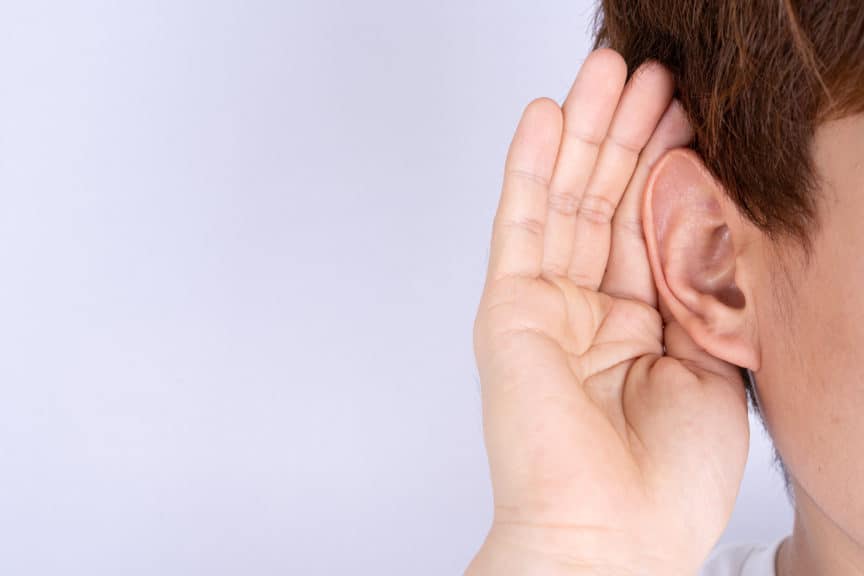Do you suspect you have a hearing loss? If you do, you are not alone. It’s estimated that at least 48 million people in the US alone have some degree of hearing loss. However, understanding the degree of your hearing loss is important. It allows us to find the best solution to help you hear. You can find out the degree of your hearing loss by attending a hearing test. The results will be able to be viewed via an audiogram. Here is how to read your audiogram and understand the degree of your hearing loss.
How sound is measured
The loudness of intensity of sound is measured in decibels (dBA). Decibels are the volume of sound. To get a better idea of the decibel levels of everyday sounds in your life:
- Breathing: 10 dB
- Normal conversation: 40-60 dB
- Lawnmower: 90 dB
- Rock concert: 120 dB
- Gunshot: 140 dB
Safe listening threshold in decibels
When sound surpasses a safe listening threshold, it can cause permanent hearing damage, making it difficult to hear the people in your life and the world around you. It’s a combination of decibel level and length of exposure. For instance, any sound that surpasses the safe listening threshold of 85 dBA can cause damage if exposed consistently for 8 hours or more. As the decibel levels rise, the time it takes for damage to occur quickly shortens. At 95 dB it takes only around an hour for damage to begin and at 105, damage can occur in around 15 minuets. By the time sound reach between 120-140 dBA damage can occur in seconds!
Frequency and pitch
Besides the volume of sound, sound is measured in frequency, or pitch. It’s measured in Hertz (Hz). When your hearing is tested aside from the quietest decibel volume you can detect, your audiologist will also measure your ability to detect frequencies. A range of 250 Hz to 8000 Hz is measured because it encompasses the speech frequencies—the most important range for communication.
The combination of decibels and hertz you can detect in each ear in form the degree of hearing ability have.
Degrees of hearing loss
Degrees of hearing loss are categorized into at least five categories to determine the level of treatment you may need.
- Slight hearing loss: When you can hear sounds between 0-25 dBA this is considered normal hearing, however this occurs on a spectrum. Perfect hearing 0 dBA though some people can hear into negative decibels. However, a slight hearing loss is measured between 15 to 20 dBA. It’s not technically considered a hearing loss but you may miss some whispering or other subtle sounds.
- Mild hearing loss: A mild hearing loss starts past 26 dBA to 40 dBA. You can hear most conversations but will miss occasional words and struggle to hear in noise, when multiple conversations are happening at once.
- Moderate hearing loss: Measuring between 40-69 dBA, you may find you have to frequently ask people to repeat themselves during conversations and struggle to hear people over the phone. At a moderate hearing loss, its recommended to start with lower powered hearing aids to help enhance conversation.
- Severe hearing loss: Measured at a loss of 70-94 dBA, you may find that it’s hard to hear people without the use of amplification. You may often rely on reading lips and body language more than auditory inputs.
- Profound hearing loss: People with this degree of hearing loss cannot hear sound lower than 95 dBA. Those with profound hearing loss can only hear very loud conversations. A cochlear implant or high-powered hearing aid is often recommended in order to hear the world around you. You may benefit from using sign language to communicate.
How hearing loss is measured
You may have suspected you have hearing loss for years, but you won’t know for sure until you attend a hearing exam. A hearing exam will measure the level and pitch of sounds you struggle with so the best solution for hearing support can be determined. This will be achieved using a series of hearing tests. The results of these tests will be printed on an audiogram. The audiogram is a graph which shows the highest frequencies and decibels you can detect. Based on the outcome and the lifestyle information you provide; we can recommend the best solution for your hearing needs to help improve your total quality of life. To find out more, schedule a hearing exam with us today!

